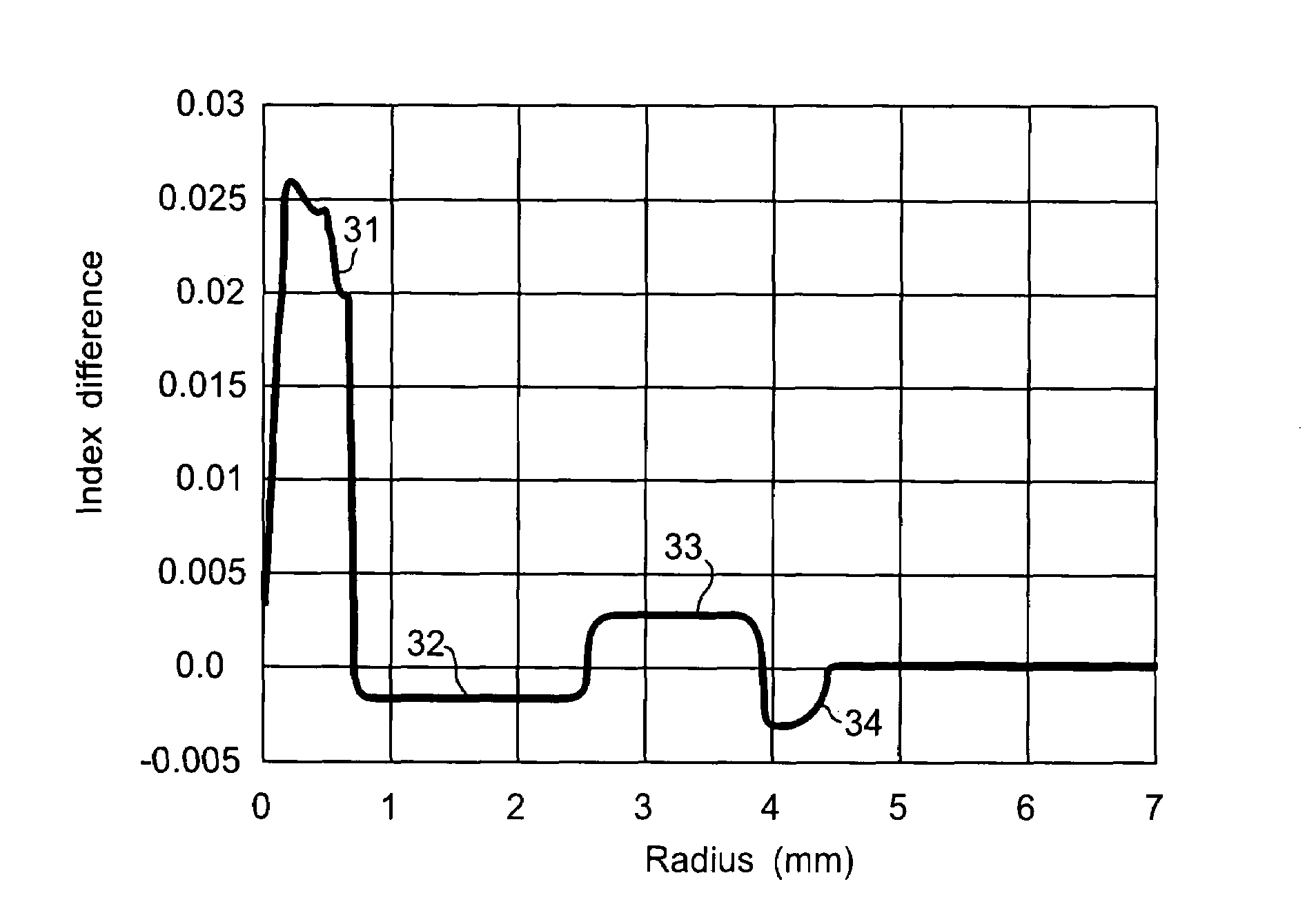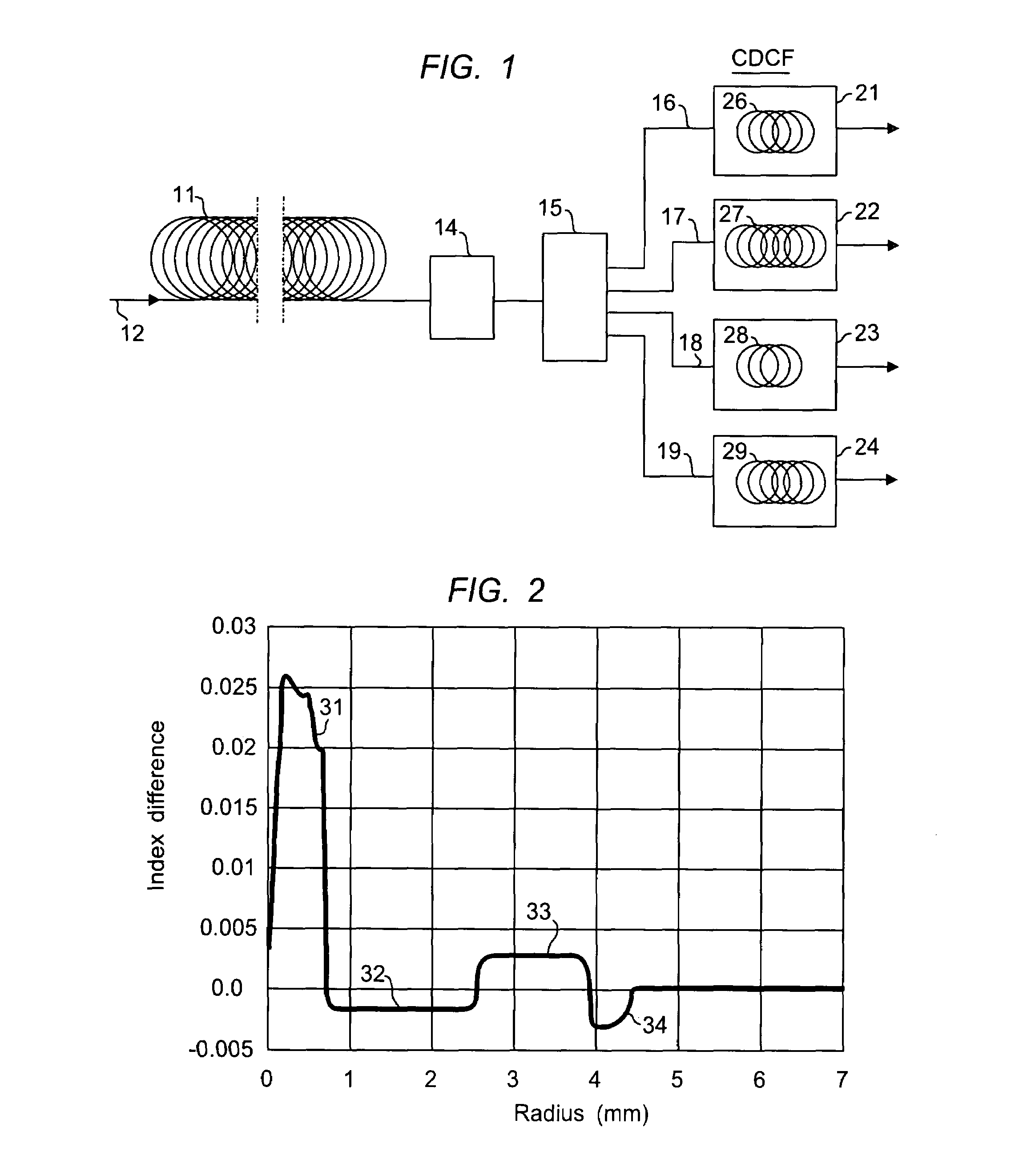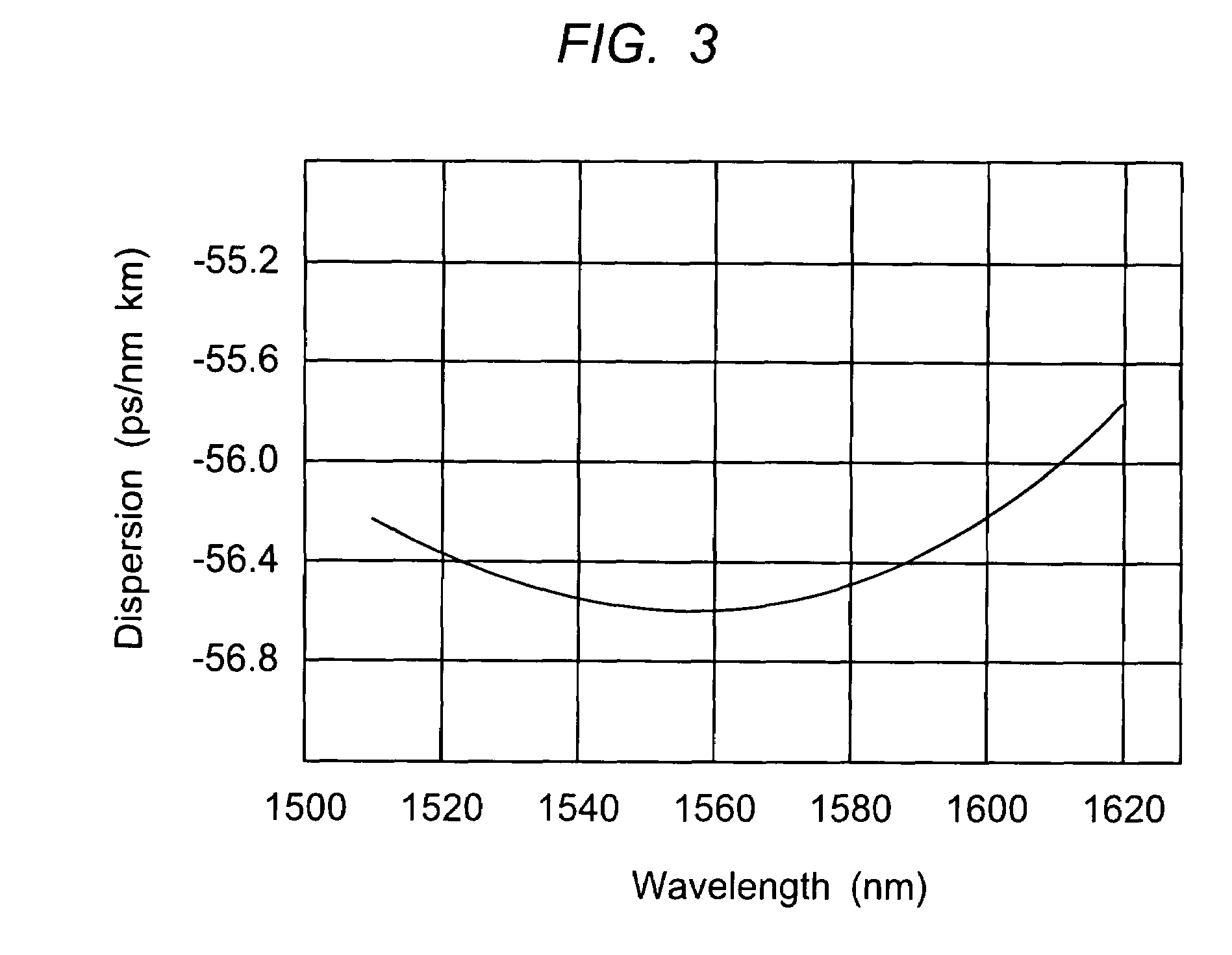Method for the manufacture of optical fibers and improved optical fibers
a technology of optical fibers and fibers, applied in the field of optical fiber transmission systems, can solve the problems of increasing data bit rate, increasing system cost, and overlap of optical data pulses traveling over long transmission lengths
- Summary
- Abstract
- Description
- Claims
- Application Information
AI Technical Summary
Benefits of technology
Problems solved by technology
Method used
Image
Examples
Embodiment Construction
[0024]A long haul transmission system, with dispersion compensating and demultiplexing elements, is shown schematically in FIG. 1. Here the long length of transmission fiber is shown at 11, with input signal at 12. The transmission fiber 11 may be tens of kilometers in length. The input signal is a multiplexed signal, typically with at least 4 signal bands. In state-of-the-art systems, the input signal operates at 10 Gb or more, and has 8 or more channels, more typically 40 or more channels. In FIG. 1, the element that performs the transmission line compensation is represented by box 14. This element is typically installed in-line and may operate on the entire bandwidth of the multiplexed signal. In systems where the bandwidth is very wide, for example, in systems covering at least portions of the S-, C- and L-bands, the overall signal may be split into two or more bands, and a separate DCF is used for each of the split bands.
[0025]The dispersion compensated signal then arrives at t...
PUM
| Property | Measurement | Unit |
|---|---|---|
| wavelength region | aaaaa | aaaaa |
| wavelength | aaaaa | aaaaa |
| wavelengths | aaaaa | aaaaa |
Abstract
Description
Claims
Application Information
 Login to View More
Login to View More - R&D
- Intellectual Property
- Life Sciences
- Materials
- Tech Scout
- Unparalleled Data Quality
- Higher Quality Content
- 60% Fewer Hallucinations
Browse by: Latest US Patents, China's latest patents, Technical Efficacy Thesaurus, Application Domain, Technology Topic, Popular Technical Reports.
© 2025 PatSnap. All rights reserved.Legal|Privacy policy|Modern Slavery Act Transparency Statement|Sitemap|About US| Contact US: help@patsnap.com



